Ideas on the wall: Murals course shares art with the public
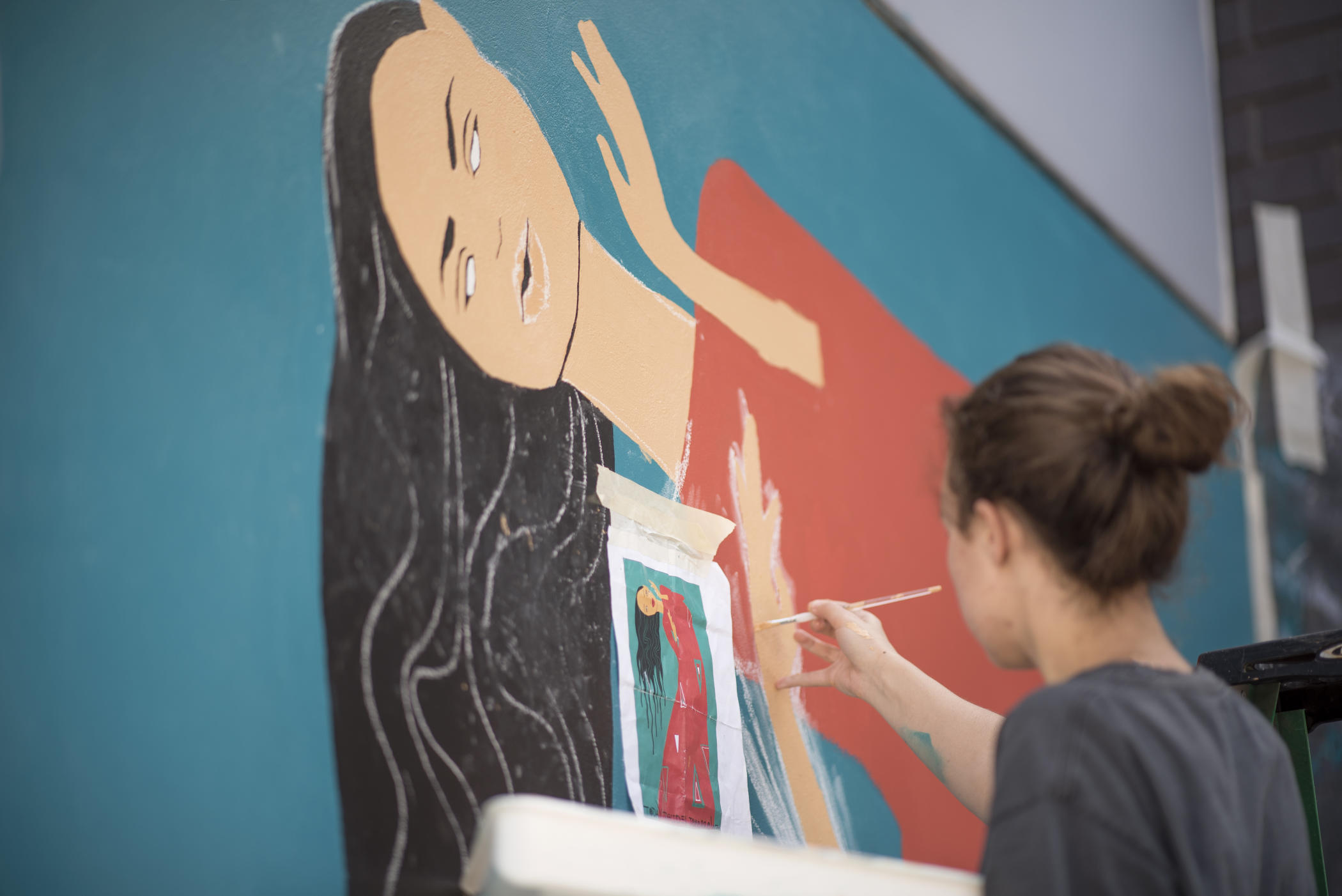
Student Autumn Robertson works on a mural during her Public Murals class on Friday, May 4, 2018 in Chico, Calif. (Jessica Bartlett/University Photographer)
In art professor J. Pouwels’ “Public Murals” course, knowing how to cut through red tape is every bit as valuable as one’s skill with a paintbrush.
Through the process of pitching, commissioning, and completing projects, students learn a valuable lesson: There is much more to public art than the image.
Several high-profile murals throughout the North State have come from Pouwels’ first-semester course, taking shape in libraries, building exteriors, and the recently unveiled Cesar Chavez mural that now resides in City Hall.
Studio art major Shay Taylor worked with classmates Will Mobley and Kris Johnson to produce the 8-by-4-foot piece, “Si, Se Puede,” commissioned by Associated Students for a celebration of Cesar Chavez Day. The mural displays the visage of the renowned labor leader smiling over the University campus, adjacent to agricultural workers in a field, all under the sun and the United Farm Workers’ black eagle.
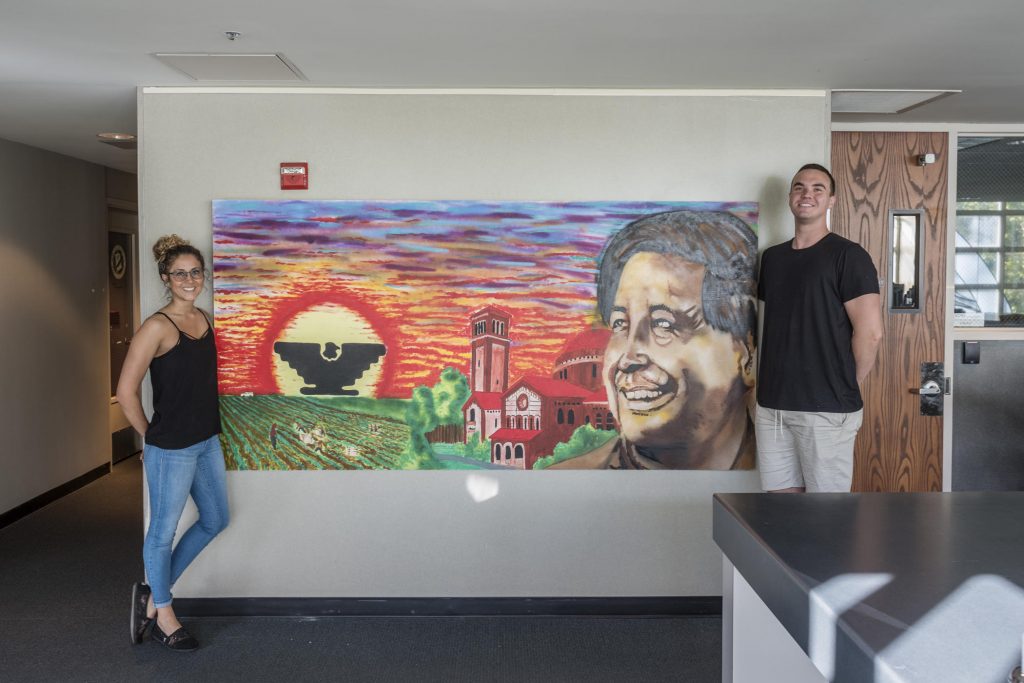
(Jason Halley/University Photographer)
“They wanted to bring life to something that’s very important to this area,” said Mobley. “Our biggest accomplishment with the Chavez mural is a sense of community—an overall sense of unity throughout the University, Chico itself, and the local Hispanic community, too. The scheme and composition carried that whole message out.”
And lessons extend beyond successfully completed projects.
“Si, Se Puede” exists as a source of pride for everyone involved, representing not only a meaningful symbol because of Chico’s agricultural roots and presence, but also a minor miracle of teamwork and production expertise. The mural transformed from concept to completed work in less than 24 hours after a client-side lapse in communications; the student trio labored on short notice from 5 p.m. into the early morning to get it done in time for a March 30 celebration.
“The reason I took this course was to learn to work with a client—in real-life situations and with real challenges—and we’ve definitely dealt with that,” Mobley said. “It prepares you to think on your feet, act accordingly, and still produce something amazing. I’ll take more away from it this way than I would just focusing on painting.”
But not every project reaches completion.
In the foyer of Common Grounds in the Bell Memorial Union, thousands of students this semester have unknowingly stood with their backs facing the designated spot for a whimsical painting of flowers, frogs, and saxophones, a blast of fun flora and fauna rife with hidden symbols and twisting ribbons of color. It wasn’t to be.
The challenges were purely logistical; only a last-second change from campus facility professionals prevented the design from seeing the coffee shop. That’s the way it goes in the public art world, Pouwels said, noting the class lets students experience such frustrations firsthand.
“It’s a mural course,” he said, “but it’s not so much about painting, as it is learning to collaborate and navigate the challenges of getting an idea on the wall.”
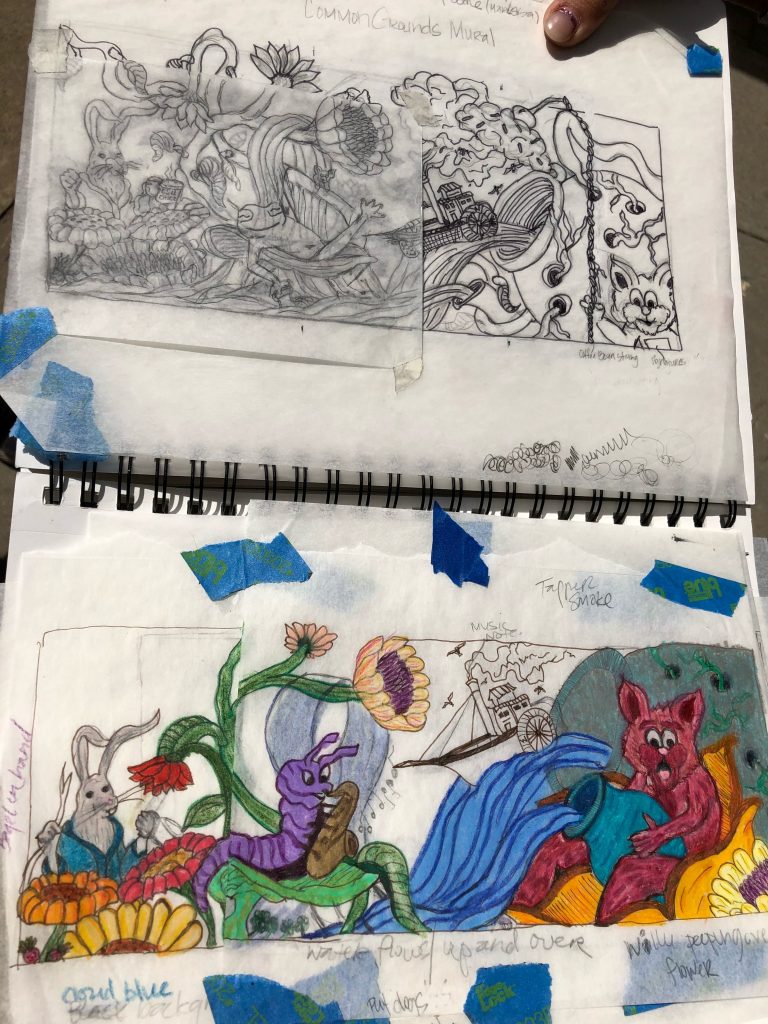
Successfully doing so makes it that much more rewarding when projects do come to fruition.
“That was a fun learning experience,” said Taylor, a double major in photography and studio art who was part of the team commissioned for the Common Grounds mural, which could still be a possibility with a redesign. “They loved the design, and it just came down to logistics. You realize on the business side of things, that’s part of the process.”
Sometimes, of course, business can be fruitful. Other students have spoken with TBar & Fusion Cafe and a third-party designer to work on remodels and designs for 10 franchises up and down the West Coast, Pouwels said, with real input from clients and consultants guiding their efforts. The class has also brought murals to libraries and schools in rural areas of Butte County, like Los Molinos, Corning, and Oroville. Students get familiar with the negotiation and logistics side of public art projects, like working with state agencies to ratify designs and securing funding, while businesses and community leaders alike benefit from adding creative endeavors that flow forth from student-artists’ minds.
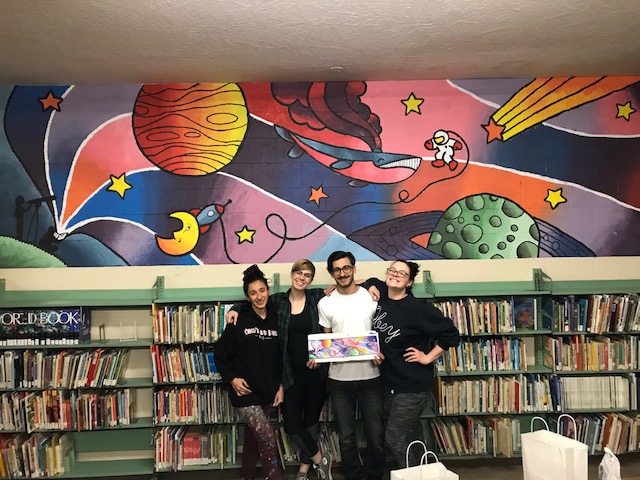
“Art of all kinds plays an integral role in Chico’s city life, and the creative mind continues to be a benchmark of our citizenry,” said Chico City Manager Mark Orme, introducing “Si, Se Puede” to its home in City Hall. “The city is proud to display this wonderful illustration of vibrant and bold art, to inspire future artists and contribute toward our thriving arts culture.”
The University is reaping its own rewards from the course.
Studio arts major Rosetta Zanella is working to beautify new router boxes across campus, featuring an artistic solution to decorate them with faces of significant historical figures and QR codes that guide to information about that person when scanned. The theme was one of three Zanella pitched to Information Resources for the project; all of them got approval.
Another group in class refurbished rows of art lockers upstairs in Ayres Hall, transforming unsightly banks of grimy-looking metal into a rainbow row of matte-finished receptacles overlooking the building’s inner courtyard where the murals course does the majority of its hands-on work.
The newest addition to campus is a vibrant display in the sculpture niche by Academe, the John Pugh mural on the east side of the Arts and Humanities Building. The new mural, conceptualized and painted by studio art majors Autumn Robertson and Rafa Orti, faces campus from its nook near the roundabout at First and Salem Streets.
The primary campus access point from the east now boasts the University’s motto, “Today decides tomorrow,” above a woman in a dress decorated with triangles, which represent the concept of choosing one’s direction.
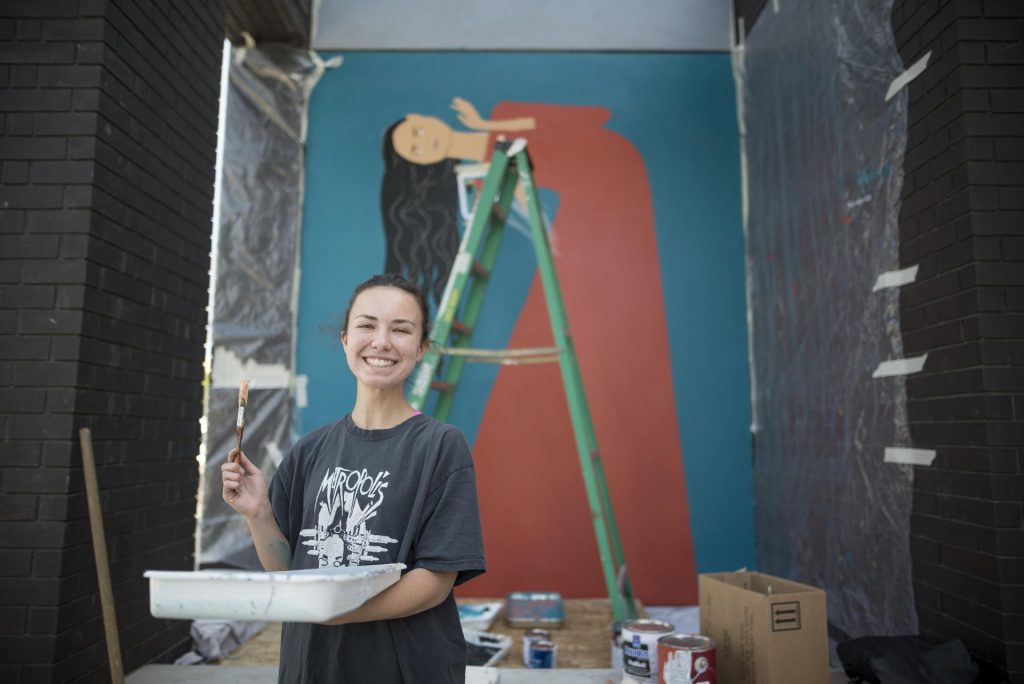
(Jessica Bartlett/University Photographer)
“Art has the ability to inspire people, and that is ultimately my intention with this piece,” Robertson said. “It symbolizes the directions people can choose to go in their life, and how they have the power to make their day great.”


